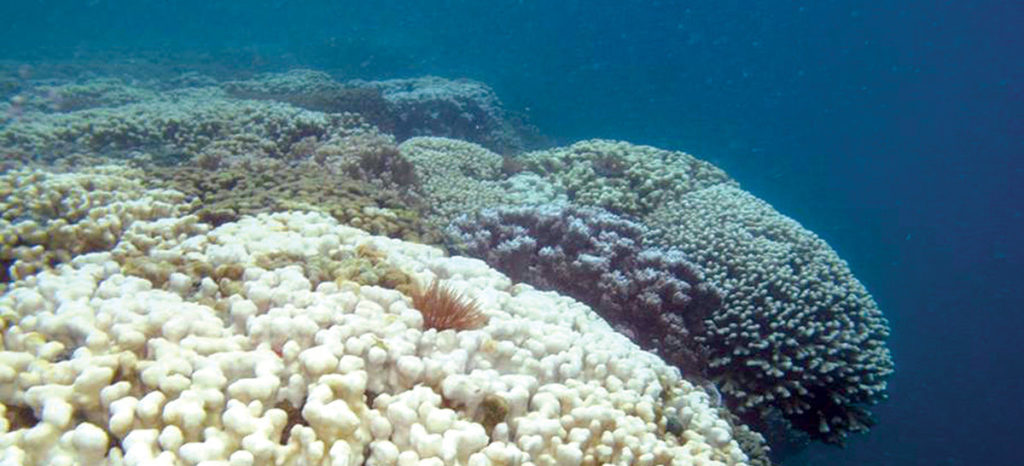UH Spearheads Coral Bleaching and Climate Change Research
Ruth D. Gates and her team are on the clock. However, unlike Jeopardy! or The Price Is Right, this is not a game and the consequences of not having the correct answer will have global implications.
That’s because Gates, a marine biologist and director of the University of Hawai‘i at Mānoa’s Hawai‘i Institute of Marine Biology (HIMB), and her team of researchers are racing against time and climate change to breed and condition corals that can withstand future ocean stressors and be used to restore and build resilience in our reefs. Part of this work involves figuring out why some corals thrive and stay a healthy brown corals while those growing right next door that are exposed to the same environmental stress turn white or bleach—a clear sign of stress.
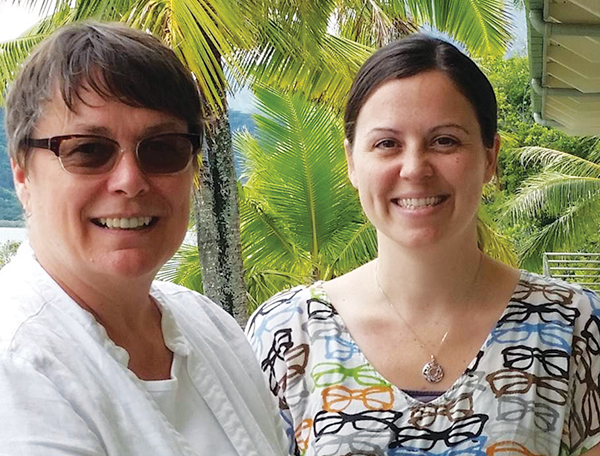
Coral bleaching is a primary threat to the persistence of coral reef ecosystems globally and is typically caused by a rise in water temperature. Coral deaths resulting from bleaching have already affected an estimated 30 percent of the world’s reefs over the last 20 years. Coral turn white (bleach) when micro algae living in its tissue that give corals their characteristic brown color—leave during stressful environmental conditions. The coral will begin to deteriorate and die if unfavorable conditions persist or are too extreme, but a coral can bounce back if conditions improve.
“A bleached coral will either recover or die,” said Gates. “It is as simple as that and we really don’t know what that outcome will be until months after the bleaching event.”
Coral bleaching and death can seriously impact a coastal area. As the structural foundation of reefs, coral play a critical role in providing protection from coastal erosion and a habitat for food fish and other sea life, while generating millions in tourism dollars in places like Hawai’i, the Caribbean or The Great Barrier Reef in Australia—places that are already being affected by coral bleaching.
Gates is a recipient of multi-million dollar support for her world-class research from a number of prominent sources, including a million-dollar donation from philanthropist Pam Omidyar to HIMB in 2009, Gates recently added Microsoft co-founder Paul G. Allen to her impressive list of supporters. In 2013, Gates and Madeline van Oppen from the Australian Institute of Marine Science (AIMS) were winners of the Paul G. Allen Ocean Challenge, an international competition soliciting the best ideas for mitigating the impacts of ocean acidification in marine systems. They were awarded a $10,000 grand prize and invited to submit a grant proposal for funding consideration. A nearly $4-million, five-year project agreement was reached in June 2015. This research provides an unparalleled opportunity to study different coral species, environmental conditions and human factors and being conducted in both Hawai‘i and Australia, generates stronger research conclusions than work at a single-site.
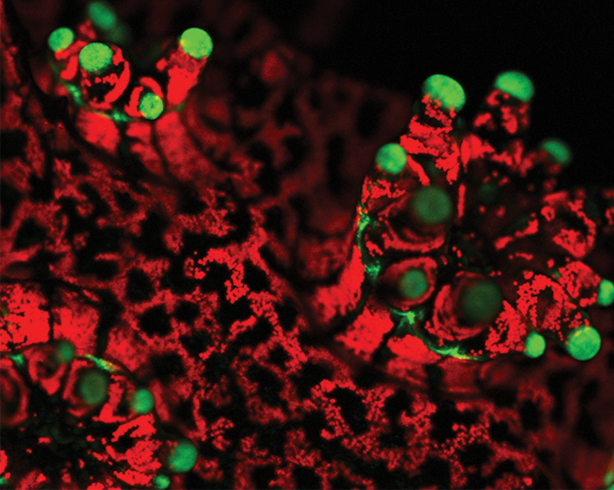
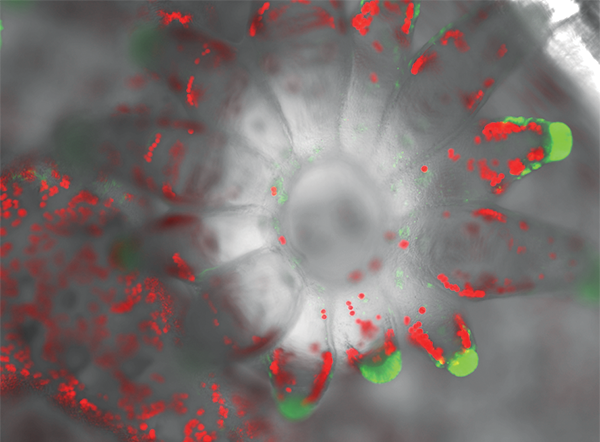
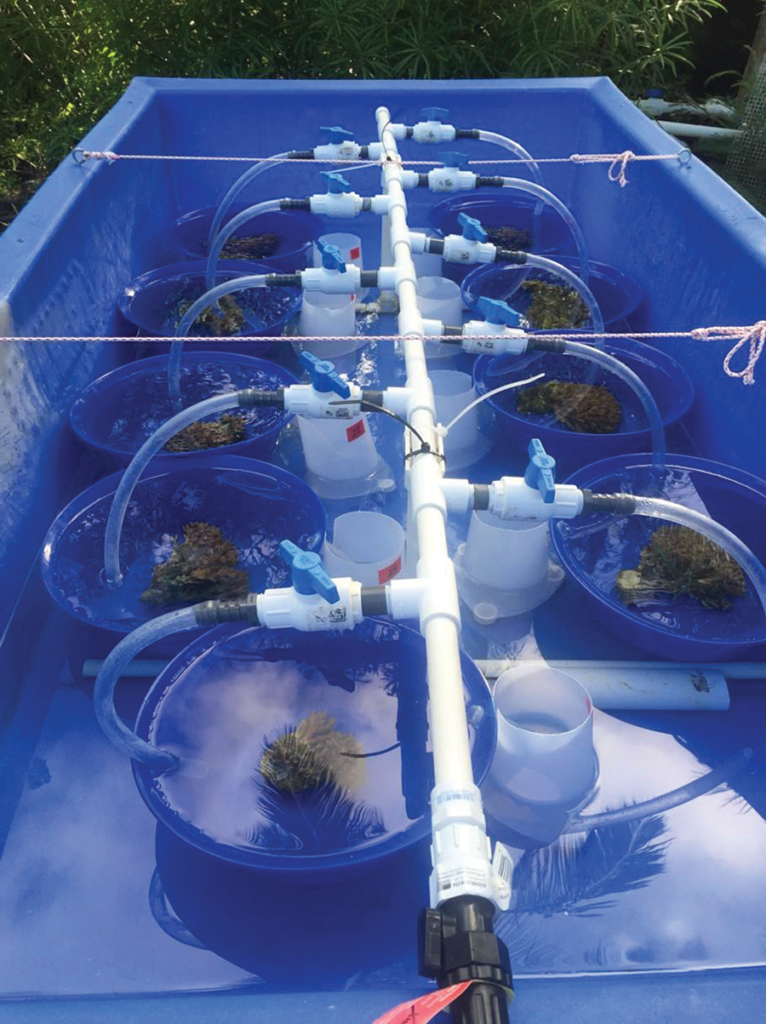
Photo: Hollie Putnam
At HIMB on Coconut Island in Kāne‘ohe Bay, Gates and her team are working with a set of corals that were both affected and unaffected by a 2014 and 2015 warming events that caused widespread bleaching throughout Hawai‘i. These pairs of affected and resilient corals are being examined to identify the factors contributing to their contrasting responses, with a focus on coral genetics and algal symbionts. Age-old selective breeding techniques (similar to those used in the agriculture industry) will be used with the corals that perform well in these trials. The strong performers will also be pre-conditioned to survive in increasingly warmer and more acidic water through successively increasing exposures. Gates refers to conditioning as “training corals on environmental treadmills.” The goal is to breed and induce greater resilience in the individual samples as well as in their offspring.
“Once we have a proof of concept, we’ll build a bank of coral stocks that are preconditioned to withstand the warmer and more acidic ocean conditions of the future,” said Gates. “Within the five-year grant period we should have a significant stockpile of highly resilient coral strains and a plan in place to use them to restore a completely denuded reef, as well as plant them on a partially damaged reef so they can reproduce with the existing corals and enhance the overall resilience of the vulnerable reef.”
The Australian experiments are being conducted at the state-of-the art National Sea Simulator (SeaSim) located on the campus of AIMS headquarters in Cape Ferguson. The SeaSim allows for tightly controlled environmental factors including temperature and water acidity during the selective breeding-style and conditioning activities. Both the Hawai‘i and Australian components of the research are conducting work that falls under the umbrella term human-assisted evolution.
“Assisted evolution takes advantage of natural processes,” said van Oppen. “It accelerates the evolution of coral and with the rapid decline of coral health worldwide, the development of tools to help protect corals from stress is urgent.”
“Human-assisted evolution for corals is a radical departure from the conservation perspective traditionally applied in the field,” said Gates. “It’s often confused with GMO-type approaches in which foreign DNA is introduced, but in reality, we are proposing to accelerate naturally occurring evolutionary processes.”
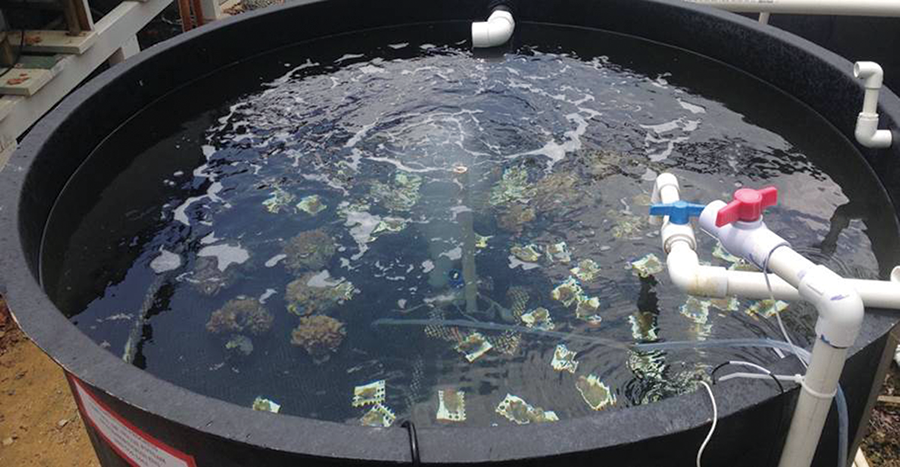
Photo: Hollie Putnam
One aspect of the research is already providing hopeful results. In 2015, a new study from Gates’ team reveals that preconditioning adult corals to increased temperature and ocean acidification resulted in offspring that may be better able to handle those future environmental stressors. This rapid trans-generational acclimatization may be able to “buy time” for corals in the race against climate change.
In this study, featured in the Journal of Experimental Biology, Hollie Putnam, HIMB assistant researcher and lead author, and co-author Gates, exposed two groups of parental corals to either ambient ocean conditions or IPCC-predicted future ocean conditions—warmer and more acidic water. As expected, the harsher future conditions negatively affected the health of the parental coral—lowering photosynthesis and production to consumption ratios. Surprisingly, however, the offspring of parents who were exposed to future conditions appeared healthier when re-exposed to the harsher environment.
“By preconditioning the corals while the offspring are being brooded it may be possible to increase the offspring’s potential to perform under stressful environmental conditions,” said Putnam.
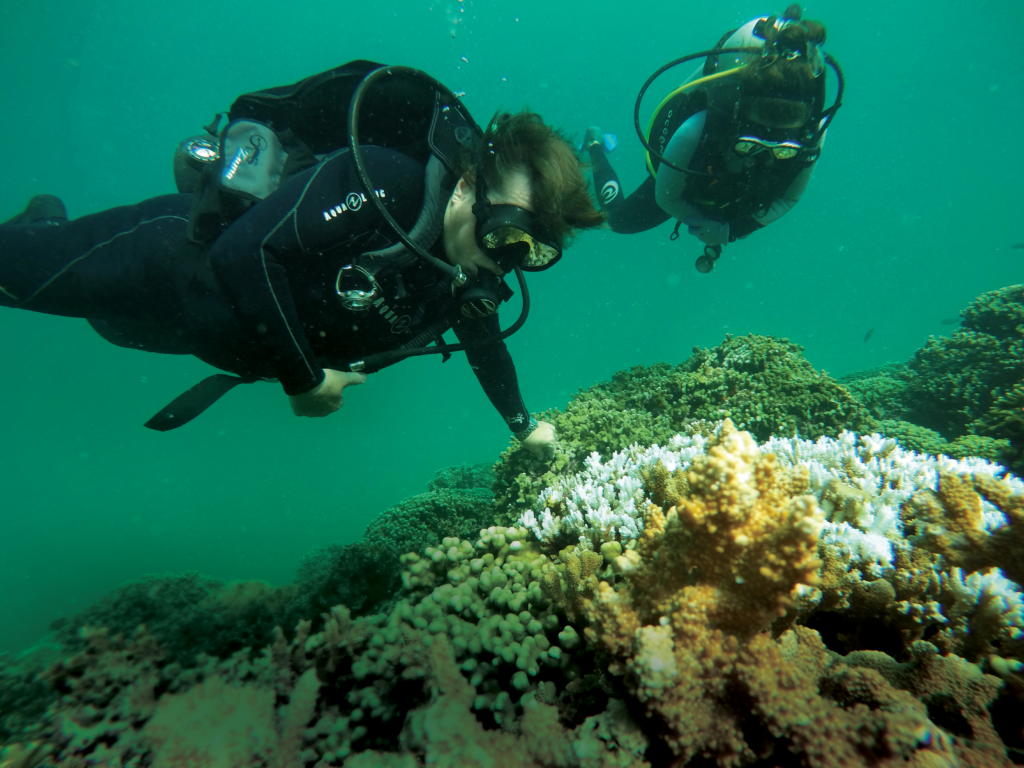
Corals have been suffering huge losses in diversity and abundance on reefs worldwide due to local stressors such as overfishing, coastal development, pollution and sedimentation. Additionally, corals exposed to ocean acidification can struggle to build their skeletons and reefs are undergoing bioerosion and dissolution.
“Together these local and global stressors are placing an unprecedented strain on coral reef ecosystems. It has even been predicted that some corals may go extinct and the reefs will not provide the same biological diversity and provisioning—goods and services valued at hundreds of billions of dollars annually,” said Putnam.
It is thought genetic adaption is the primary option for corals to respond to climate change. With the rapid rate of environmental change, however, genetic adaptation may not be able to keep pace. Putnam and Gates were interested in the potential for other more rapid response mechanisms like the acclimatization provided when adults provision their offspring based on their environmental experience. The researchers think epigenetics, or a change in the quantity and product of a gene without a change in DNA sequence, may be one such acclimatory mechanism that allows the organism to rapidly adjust to environmental change. Epigenetics and parental effects, they say, may help to buffer corals against the rapidly changing climate.
“Our work suggests that when we consider multiple life stages in connection and their environmental history, corals have resources to respond to climate change that we have not yet considered fully,” said Putnam. “This may be good news for corals of the future.”
In a new series of experiments, the researchers are expanding their analysis to more coral life stages by tracking the coral larvae from preconditioning in their parents until they settle and grow into juveniles. Their goal is to assess the “grandchildren” after three to four years, when the first offspring become reproductive. They are also comparing the response to temperature and ocean acidification simultaneously and separately to determine if one factor is more influential than another.
The overarching goal of the work of Gates and her team is to accelerate the natural processes by which corals adapt to environmental change and generate a stockpile of corals that can survive the warmer and more acidic waters of the future. As the clock ticks down, Gates and her research team are giving it their all to develop capacity that can be used to build resilience on, or restore damaged coral reefs and protect the essential diversity, goods, and services that reefs provide and that the world depends upon.

